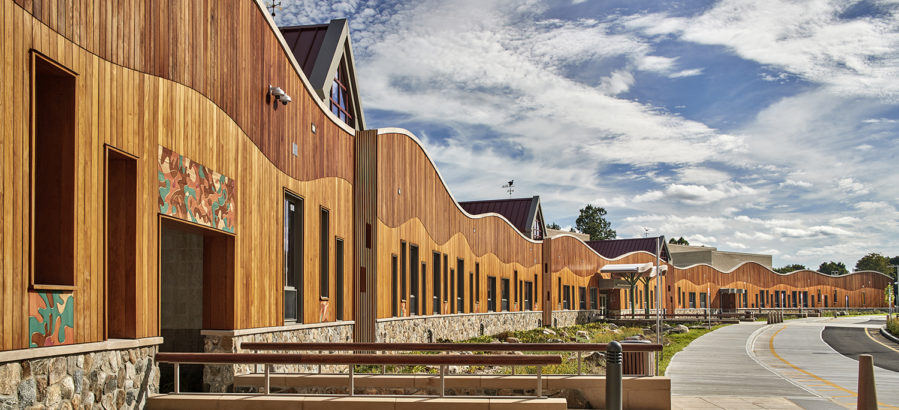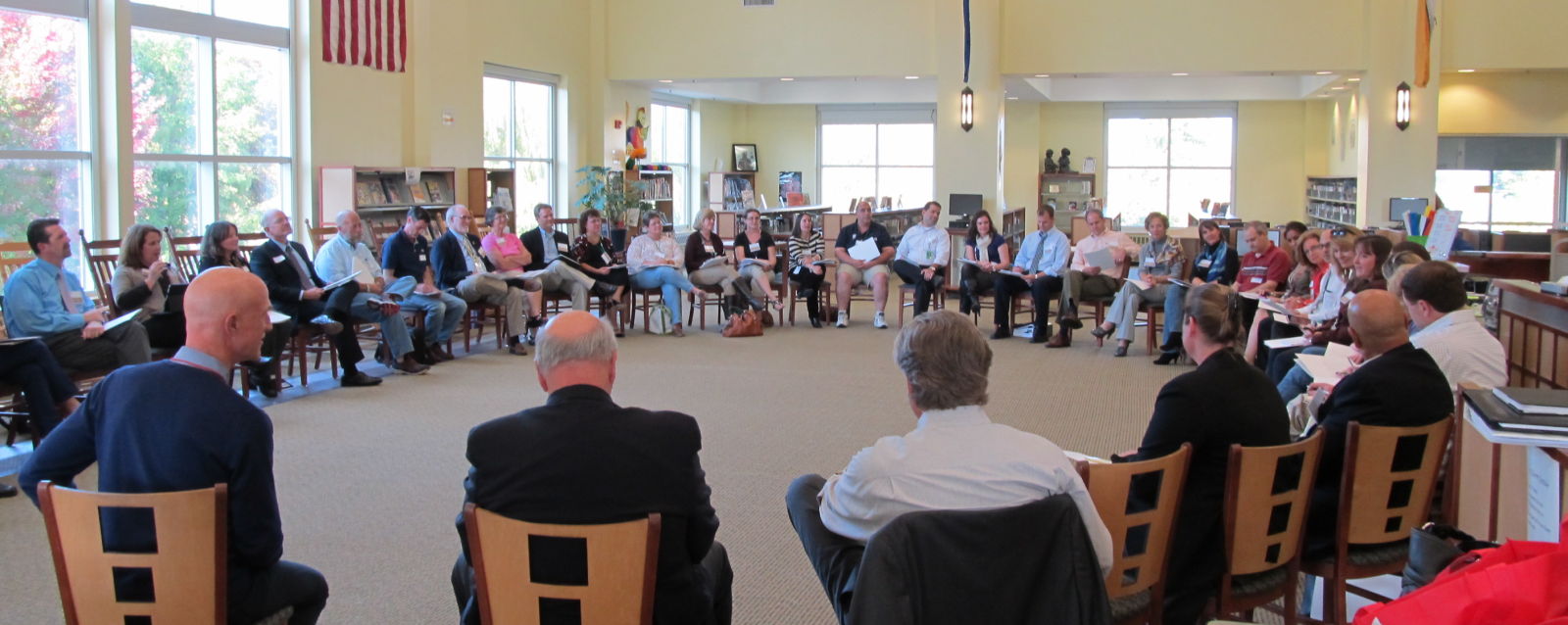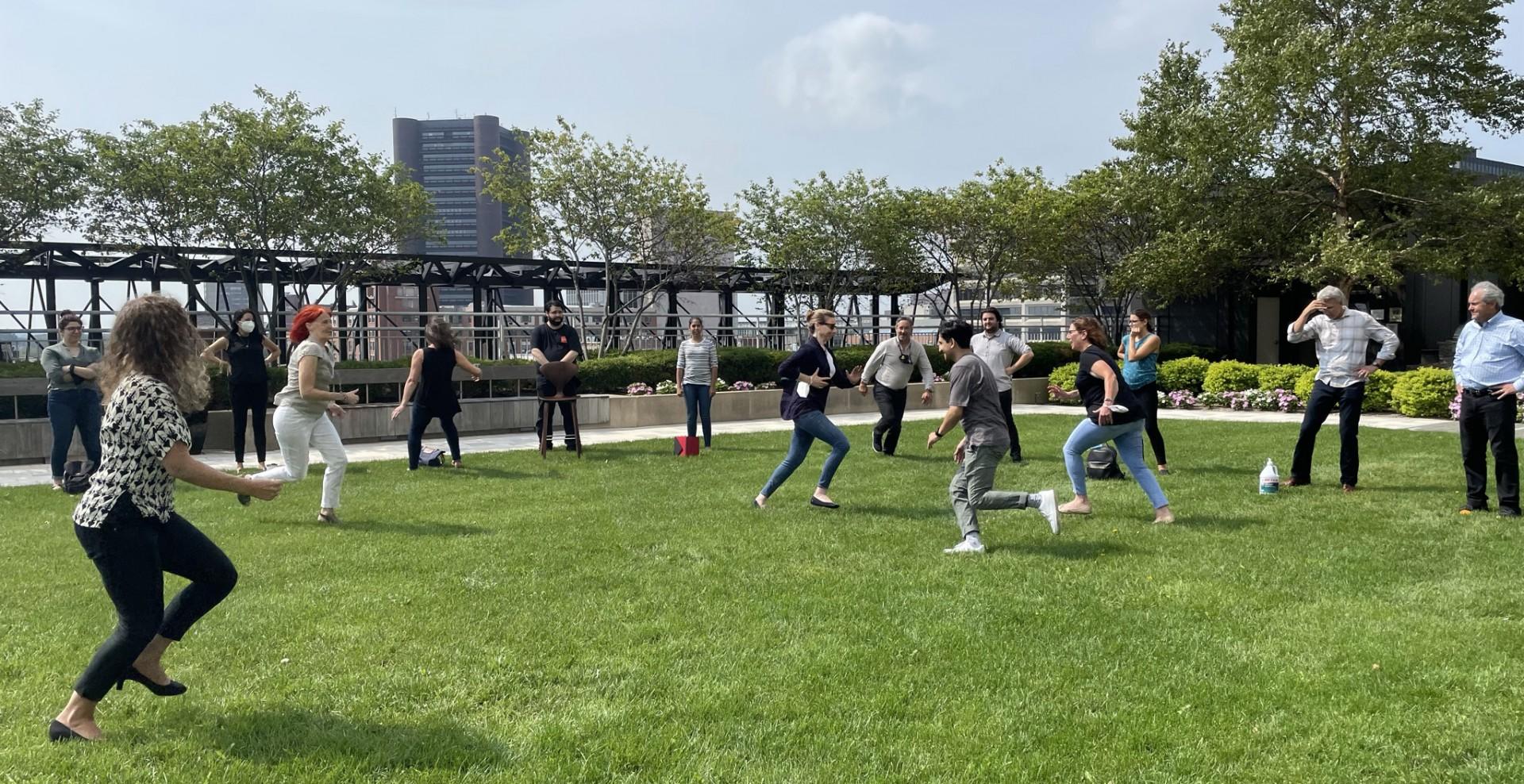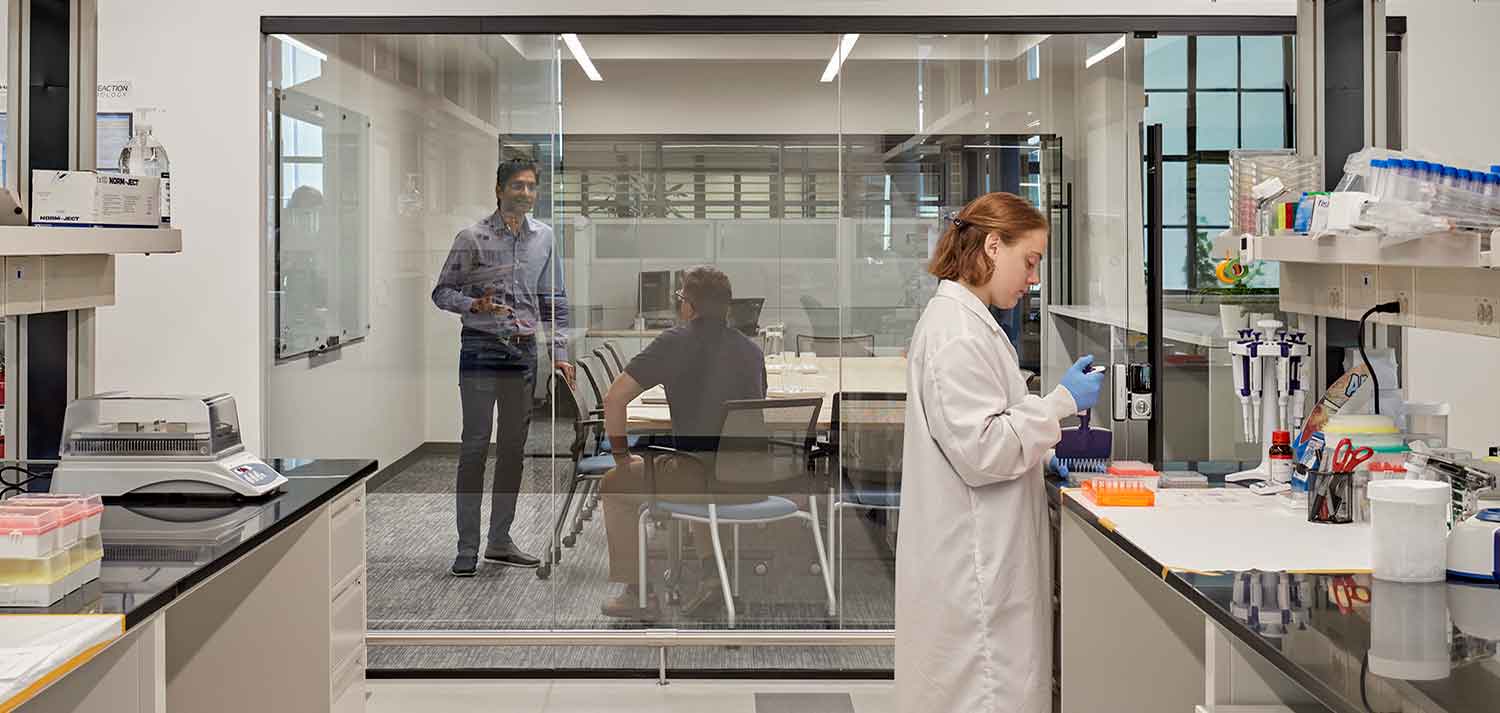Stand for Something: Jay Brotman
December 26th, 2021
By Liisa Andreassen
Zweig Correspondent
His fascination for design started at an early age. While growing up in Dallas, Brotman spent a good deal of time dreaming up ways to build complex structures from model kits. Who knew this passion would turn into a lifelong career? Today, he dedicates his energy to finding the right balance of strategic and creative endeavors, cultivating client relationships and mentoring a highly productive team.
“We’re creating a culture that stands for something,” Brotman says. “We pursue projects we excel at and that we want to work on. Our decisions are not based on the bottom line. Of course, we need to stay healthy in that regard, but real sustainability comes from bringing meaning and relevance to everything you do.”
A conversation with Jay Brotman.
The Zweig Letter: In 2018, you testified before Congress about school design and safety and detailed best practices – specifically in the redesign of Sandy Hook Elementary. What affect did that testimony have on current and future school design? Have you worked on additional school safety designs after that? Please explain.
Jay Brotman: For background, the overall message to Congress and to communities following the Sandy Hook tragedy was that communities need to understand that increasing security is not all about hardening. We do not advocate turning schools into fortresses. Schools are much more effective when they are open and transparent – more supportive of learning, health, and safety. We need to shift away from the language of hardening to the concept of layering. The architectural community is here to help with that. Specifically, going into the Congressional hearings, the AIA had three goals:
- Create a national clearinghouse/database where schools can find the latest information on school security and how to improve school safety.
- Establish legislative funding for the clearinghouse so it would be maintained and sustainable.
- Expand the allowable usage of funds for the STOP School Violence Grant Program to include overall security master plans.
As a result of the first goal, the national clearinghouse/database was established. Now anyone can visit schoolsafety.gov and find information on bullying, threat assessment, training and drills, mental health, and more. The effort had bipartisan backing and required support from the Departments of Justice, Health and Human Services, Education, and Homeland Security – so getting it up and running was a huge accomplishment.
On goal number two, the website has not been fully codified or funded by Congress, leaving further development and its maintenance and sustainability in question. It has been written into a bill, but like many Congressional efforts, bipartisan and otherwise, it has stalled.
Goal number three is still in progress. AIA has been pushing for $100 billion to fund school retrofits including security, deferred maintenance, and energy improvements. Only energy improvements have been included in the current proposed legislation, but even that is still considered at-risk. As far as security goes, there is no “one-size-fits-all” solution. The legislations still do not include funding for appropriate planning and this is an issue in our minds. We know that school districts don’t have adequate funding to implement the improvements we feel are needed in year one, so appropriate planning must be instituted, so projects are ready to go when the funds do arrive.
To answer your second question, yes, we’ve worked on schools since 2018 and Sandy Hook. We look at all our projects through a filter of security, including higher education, residential, and workplace. It’s about applying appropriate CPTED principles like the “eyes on the street” principle. Instead of having solid walls everywhere, you use glass. You open things up. Transparency, high visibility, good lighting, daylight – all these elements increase a sense of well-being and community. When you see others, you feel a part of a whole. Creating schools that inspire connection, that are more community-based, and support the prevention of mistreatment and bullying are the focus of soft programs working toward those goals.

TZL: Trust is essential. How do you earn the trust of your clients?
JB: Collaboration. We believe everyone can be creative, including our clients. We bring them into the conversation from the beginning, and once we are all together, everything is in the open. From the beginning, the client understands what you are talking about, creating solutions they are a part of. We hear it all the time: “I could see our input in the completed space.” In our industry, that’s not as common as you might think, so it’s a real complement. So, honestly, we don’t have to “try” to earn clients’ trust; they give it to us and we give it to them, because we are all on the same side of the table.

TZL: Diversity and inclusion are lacking. What steps are you taking to address the issue?
JB: When I started out 30 years ago, the only woman in this firm was the receptionist. Throughout my career, I’ve pressed to increase diversity. Now, half of our licensed architects are women, and we’ve had many architects from diverse backgrounds over the years. We still need to do more to diversify our staff at all levels if we’re to bring true creativity and innovation to our clients.
To meet this end, firms must look internally at office policies and hiring practices, as well as ways to support equity in the career pipeline. In the last year, we’ve initiated the development of an internal DEI committee that’s helping us identify ways to foster an environment of inclusion, increase intercultural competence, and ensure equitable access to benefits and career advancement opportunities. Located in central Connecticut, we know we need to increase our outreach to attract a broad range of talent. Over the next year, we plan to identify and connect with more schools that attract historically-marginalized students. We’ve also been longtime supporters of the New Haven ACE Mentorship program, a non-profit which guides students into pursuing careers in the AEC industry. Currently, we have two staff members serving as mentors in the program and one staff member on the board. Our firm has also contributed to the growth of Connecticut’s new chapter of NOMA (National Organization of Minority Architects), which was co-founded by one of our associate architects, and where two of our staff members sit on the executive board.
TZL: What type of leader do you consider yourself to be?
JB: The underpinning of our mission has always been, “We are better together.” This means we work collaboratively using primarily a flat organizational structure. In this way, no one person carries all the weight, and each individual is constantly learning, sharing, and teaching. To make it work, every person must be treated with respect and their individual skills and ambitions nurtured.
My role is to create a culture where this process is encouraged and flourishes, while also inspiring and guiding as needed. If we hire good and dedicated people, create a collaborative environment, then allow each person to do what they do best – the result is powerful. Micromanaging is the death of an organization, whereas empowering people to learn, grow, and lead paves the way for innovation, creativity, and strength.

TZL: What benefits does your firm offer that your people get most excited about?
JB: Culture. Creativity. Collaboration. Work-life balance. The encouragement to discover themselves, their strengths, and their interests. We have staff members who lead public art projects, have co-founded regional AEC diversity efforts and who stay immersed in sustainability issues while initiating in-house composting efforts. We encourage each individual to figure out how they want to make the world a better place, and give them whatever freedom we can to incorporate those passions into their work. This is on top of equitable pay, fully-funded healthcare and job stability because without those things, the rest doesn’t amount to much.
TZL: Ownership transition can be tricky, to say the least. What’s the key to ensuring a smooth passing of the baton? What’s the biggest pitfall to avoid?
JB: In our firm, transition has been a natural process. We’ve only had one prior leader – our founding partner who was able to retire at a decent age. The current partners were able to buy him out rather effortlessly, because we prepared early – 10 years early.
One pitfall to avoid is having the retiring partner own too much of the firm, because then a buy-out can be difficult. The earlier you start, the more affordable the buy-out becomes which broadens the field of candidates for partnership. Ideally, advance planning creates opportunity for multiple partners to be brought in which has the added advantage of broadening your network, creating more work, and introducing diversity into the leadership.
Another pitfall is relying on one personality to attract clients. Our founder was very charismatic, and clients were loyal to him. Those of us who took over needed to work hard preparing and modeling partnership, so that by the time he retired, clients knew us and there was no loss of client base.
TZL: Your company’s mission is to inspire clients to create productive playgrounds. Can you give me a recent example of where this happened? What was the project and the outcome?
JB: We just completed a full office and laboratory space for Halda Therapeutics. The biotech industry is really emerging in New Haven. We’ve been nurturing it for nearly 30 years, and now it’s blossoming. Highly innovative, collaborative companies are demanding true lab space outfitted to meet their production, safety, and health needs.
One of our specialties is making laboratories innovative environments that are not just rows of benches and hoods. To flourish, labs need offices, meeting rooms, and breakrooms. We use glass walls, doors, and dividers, because there’s a relationship between work being done inside the labs and in other parts of the workplace. Labs used to be in basements. Now they are on elevated floors with views. We make them so much more collaborative and comfortable than they were years ago, that research teams are happy and highly productive around the clock. We use branding, color, biophilia, natural light and materials, and encourage our clients to incorporate art for its life-affirming qualities. Even technical environments can be full of personality and vibrancy without being distracting; that’s the experience we bring.

TZL: A firm’s longevity is valuable. What are you doing to encourage your staff to stick around?
JB: We’re coming up on our 39th year, and I think organizationally we are stronger now than ever. We’re creating a culture that stands for something. We pursue projects we excel at and that we want to work on. Our decisions are not based on the bottom line. Of course, we need to stay healthy in that regard, but real sustainability comes from bringing meaning and relevance to everything you do. We are currently reevaluating our mission and vision as an entire firm to make sure moving forward it reflects who we want to be and how we want to change the world. Everyone is part of that process – that’s a given. While we are at it, we’re having fun. We have staff that’s been here for more than 30 years, and new people who look forward to being here long into the future. Conversely, if someone pursues another opportunity, that’s excellent too. Everyone needs to find their own path.
About Zweig Group
Zweig Group, three times on the Inc. 500/5000 list, is the industry leader and premiere authority in AEC firm management and marketing, the go-to source for data and research, and the leading provider of customized learning and training. Zweig Group exists to help AEC firms succeed in a complicated and challenging marketplace through services that include: Mergers & Acquisitions, Strategic Planning, Valuation, Executive Search, Board of Director Services, Ownership Transition, Marketing & Branding, and Business Development Training. The firm has offices in Dallas and Fayetteville, Arkansas.
See the original publication of this article here.








